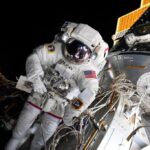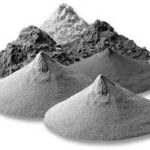

While additive manufacturing (AM) on Earth advances, so too do the possibilities in space. We have yet to see the 3D printers aboard the International Space Station (ISS) save the day in an Apollo 13 moment. However, the inevitably of 3D printing critical spare parts does not seem to lay too far out into the future. NASA engineers are already using AM to create replacement components for the ISS, most recently for the Space Station’s Urine Processor Assembly.
In this case, the system was not repaired using 3D printers aboard the ISS, but the feasibility of such a scenario put to the test when engineers for the station’s Environmental Control and Life Support Systems (ECLSS) redesigned the Urine Processor Assembly, flown to the ISS in March and installed in September.
“The distillation assembly is the heart of the Urine Processor Assembly,” said Arthur Brown, deputy manager of ECLSS integration and development at NASA’s Marshall Space Flight Center in Huntsville, Alabama. “It’s the core of the machinery that converts human urine into clean drinking water.”
The Urine Processor Assembly sees urine boiled in the distillation assembly and sent to a water processor that filters and chemically purifies it into usable water, thus limiting the need, and therefore costs, that go along with shipping water to the ISS from Earth. The technology was first developed for NASA in the 1990s and has been upgraded ever since, now allowing the crew to recycle 90 percent of the water they need on station.
One issue that continued to impact the system was that of worn out belts, needed for belt drives to translate motion across hardware elements and connecting rotating parts to drive gears and wheels. Belts are ubiquitous in the machine world and, in the case of the urine distillation assembly, exposure to steam causes them to wear how more quickly.

To prototype a new belt drive design, the ECLSS team worked with engineers in Marshall’s Materials and Processes laboratory, to 3D print possible options for extending the life of the system’s belts. The teams 3D printed plastic-toothed drive pulley prototypes with near-flight quality in less than two weeks before exploring other upgrades, including internal part redesigns meant to reduce the impact the steam and fluid on the urine distillation system.
Whereas the previous distillation assembly might have experienced part failures after 1,400 hours of use, the newest designs saw service life expectancy rise to over 4,300 hours. Because the machine is only used for several hours daily, this means the system could extend to multiple years.
Prototyping parts for the Urine Processor Assembly obviously served to address a very immediate problem using 3D printing on Earth, but the project served as a trial run for what may come as NASA embarks on its Artemis program for sending astronauts to the Moon in 2024.
“As we travel farther from Earth on Artemis missions to the Moon and build toward longer, crewed missions to Mars, it’s inevitable we’ll need more reliable hardware and a reduced requirement for spares,” Brown said. “Even from the space station, it’s a long way to the nearest hardware store or machine shop.”
The ultimate plan is to have spare parts for such systems as the Urine Processor Assembly replaceable in space itself, according to Brown:
“Our first goal is always to increase reliability. If hardware doesn’t break, that’s a problem solved. But we’re also working to enable on-orbit maintenance by replacing component parts – from sensors to vacuum pumps – instead of taking out whole mechanisms and flying up brand new ones. In future systems, everything internal is designed to be individually replaceable by the crew.”
In-space maintenance is just one of many operations that will need to be performed for long-term space missions. Others include constructing bases, recycling materials, and manufacturing of complex structures, such as satellites.
If you're looking to get architectural 3D animation in the USA, our service provides an exceptional way to bring your architectural concepts to life through dynamic, immersive visuals. Through our platform, you can easily request high-quality 3D animations that showcase your designs in motion, offering a detailed view of your project from multiple angles and perspectives. Whether it's for a real estate development, a commercial building, or an urban planning project, our expert team ensures that every detail is captured in a visually compelling animation.
Through our website, you can seamlessly get architectural 3D animation tailored to your project’s specific needs. With our help, you can offer potential clients or investors an engaging experience that goes beyond static images. By integrating CGI animations with real-world settings, lighting, and textures, our team creates a lifelike experience that allows your audience to interact with your project as though it were already built. This service is perfect for presenting complex designs in a clear, visually attractive way that stands out in the competitive architectural market.




